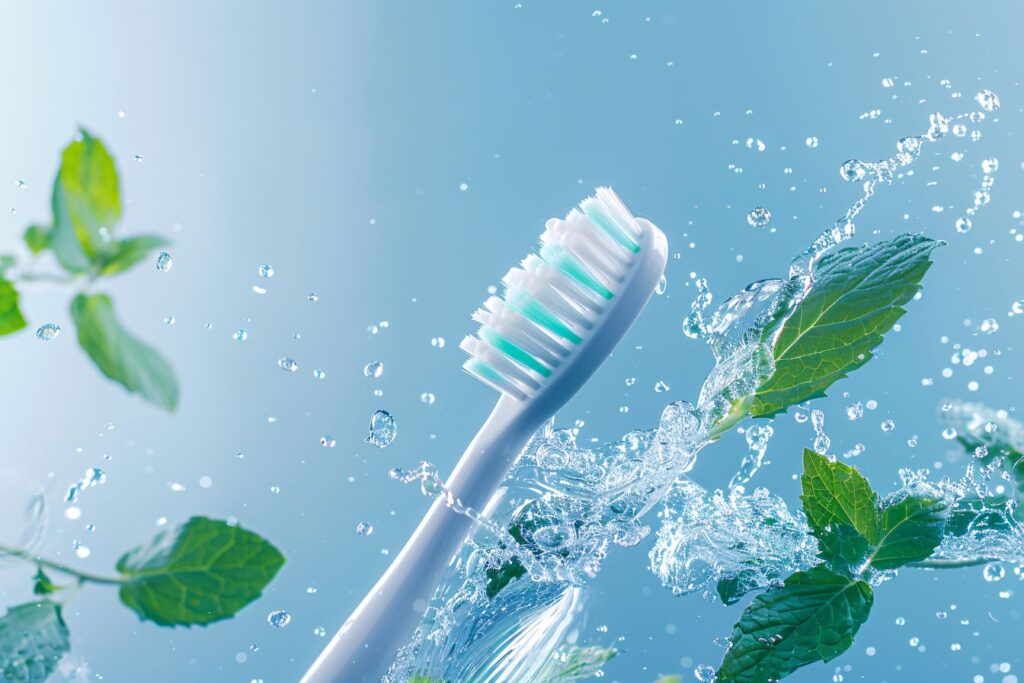
Using fluoride to help keep your child’s teeth strong and healthy is second nature, but it wasn’t always that way. In fact, how we started using fluoride in the water supply has a pretty weird history. Thankfully, despite its bizarre origins, fluoridated water turned out to be for the best, but getting there was a fascinating tale! Here’s the origin story of how one dentist helped protect millions of tiny teeth with the help of this mighty mineral!
Teeth Mottling: The Beginning
The story of how we came to fluoridate our water started in 1901, when a dentist by the name of Dr. Frederick McKay arrived in Colorado Springs to open a dental practice. Dr. McKay noticed that many of his patients had similar brown stains on their teeth. In fact, some were so badly mottled they appeared to have chocolate caked on their teeth.
Curious about what could be causing this to happen, Dr. McKay enlisted the help of a researcher by the name of Dr. G.V. Black, and in 1909 Dr. Black arrived in Colorado to help investigate. For the next six years, the men worked together to try and uncover the cause of the discoloration (now called fluorosis). In their research they discovered that approximately 90 percent of the local children had the same type of stains, but that for some weird reason their teeth were highly cavity resistant.
Moving On
By 1923, Dr. McKay had hit the road for Oakley, ID, where he heard that similar tooth mottling was affecting the local population following their switch to a new water supply. He advised the town to switch their source to a nearby spring, and within a few years the mottling had stopped.
Next, he headed to Bauxite, AR, the home of the Aluminum Company of America (ALCOA). The town was also experiencing an uptick in tooth mottling, and after working together with ALCOA’s chief chemist, H.V. Churchill to test the local water supply, it was discovered that it contained high levels of fluoride. Churchill notified McKay of his findings, and McKay ordered the water in both Colorado Springs and Oakley to be tested for fluoride. Surprisingly, both towns had increased levels of the mineral, enabling McKay to finally solve the mystery of what exactly was causing the mottling.
Narrowing it Down
Soon after learning about Dr. McKay’s findings, the National Institute of Health (NIH) picked up where he left off and began a deeper probe into the effects of water-borne fluoride on the teeth. Two men, Dr. Trendley Dean and Dr. Elias Elvove developed a way to measure fluoride levels in water, and by the 1930’s the NIH was able to surmise that fluoride levels up to 1.0 ppm would not cause the mottling of fluorosis.
Following this discovery, Dr. Dean became curious about whether or not adding safe levels of fluoride to public water would help protect teeth against tooth decay, and in 1945 he began a study in Grand Rapids, MI where the town had just voted to add it to their drinking water. The study was set for 15 years, however after only 11 years Dean realized that cavity levels in local children had plummeted by more than 60 percent!
Fluoride Today
Today fluoridated water is used in many communities across the world to help protect teeth and prevent cavities. Here in America, this safe, affordable treatment costs a little more than a dollar per person annually, making it a cost-effective means to safeguard smiles simply by having a drink!
Remember, fluoridated water is a wonderful way to help protect you and your family’s oral health without even trying. If your community doesn’t fluoridate, speak to your dentist about adding a fluoride supplement to your child’s routine, and always brush with fluoridated toothpaste!
About Dr. Vahid
Dr. Sheh Vahid loves working with kids of all ages to help them achieve their best smile ever. Her warm, compassionate nature helps children feel at ease, making it easier for them to not just like caring for their teeth, but also to like visiting the dentist!
To help protect your child’s teeth, please schedule an appointment at Woodland Pediatric Dentistry by visiting our website or calling us today at 678-498-2878.
